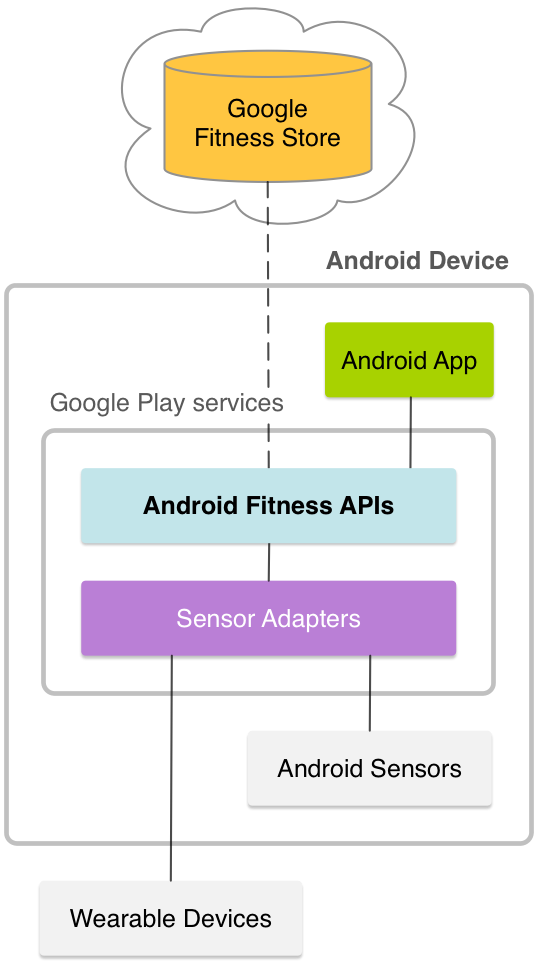Interfejsy Google Fit API na Androida są częścią Usług Google Play. Interfejsy Google Fit API są obsługiwane na Androidzie 4.1 (poziom API 16) i nowszych. Dzięki nim może:
- Odczytywanie danych historycznych i danych w czasie zbliżonym do rzeczywistego, w tym danych z urządzeń Bluetooth Low Energy (BLE).
- Rejestruj działania.
- Powiąż dane z sesją.
- Ustal cele fitness.
Odczytywanie danych z czujnika
Jeśli aplikacja dostarcza informacji o aktywności użytkownika, na przykład o codziennych krokach, warto wyświetlać dane o ruchu użytkownika w czasie zbliżonym do rzeczywistego. Interfejs Sensors API zapewnia dostęp do strumieni nieprzetworzonych danych zawierających te informacje. Dane te mogą pochodzić z czujników dostępnych w urządzeniach z Androidem, a także z czujników w urządzeniach do noszenia, np. w urządzeniach do noszenia.
Rejestruj dane
Jeśli Twoja aplikacja musi zbierać, przechowywać i synchronizować dane o aktywności fizycznej użytkownika, możesz skorzystać z interfejsu Recording API. Ten interfejs API przechowuje dane o zdrowiu i samopoczuciu za pomocą subskrypcji. Aplikacja określa co najmniej jeden typ aktywności do rejestrowania. Google Fit będzie przechowywać w tle dane określonych typów, nawet jeśli aplikacja nie jest uruchomiona. Subskrypcje są też zapisywane po ponownym uruchomieniu systemu.

dane historyczne,
Jeśli chcesz, aby użytkownicy mogli wyświetlać dane o aktywności fizycznej z wcześniejszej aktywności, możesz użyć interfejsu History API. Zapewnia on dostęp do historycznych danych o zdrowiu i samopoczuciu oraz umożliwia aplikacjom wykonywanie operacji zbiorczych, takich jak wstawianie, usuwanie i odczytywanie danych.
Sesje
Dane o aktywności fizycznej same w sobie mogą być przydatne, ale w połączeniu z dodatkowymi informacjami o aktywności użytkownika są bardziej przydatne. Interfejs Sessions API łączy dane o zdrowiu i samopoczuciu wraz z metadanymi w jednostki nazywane sesjami. Sesje to przedziały czasu, w których użytkownik wykonał aktywność fizyczną.
Wyświetl i ustaw cele
Aplikacja może motywować użytkowników, pokazując, jak ich aktywność fizyczna wypada na tle wyznaczonych celów. Goals API pomaga aplikacji wyświetlać użytkownikom cele związane ze zdrowiem i aktywnością fizyczną.

